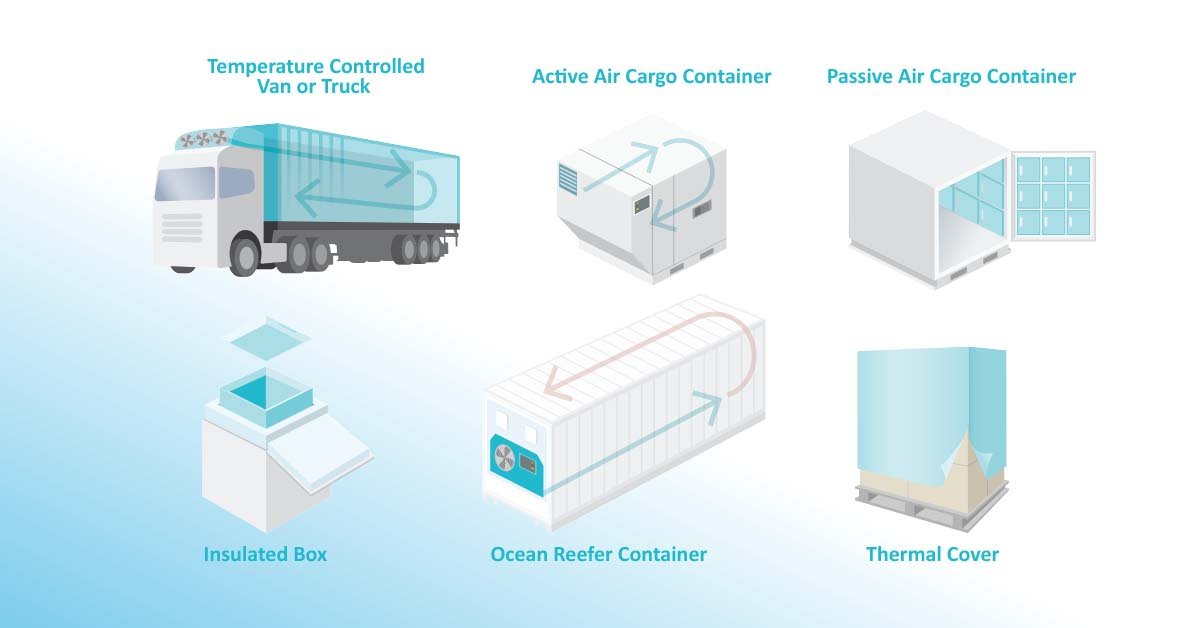Making the Right Cold Chain Logistics and Packaging Choices for Your Products
Your unique products need to be transported in an appropriate container for the transportation method. Which container and which transportation method is right for your products?
Shipping Transportation, Shipping Size, Shipping Temperature Requirements, Shipping Distance
Maintaining temperatures to required specifications during transport is a question of mode (road, air, ocean), size (small quantity of product vs. several pallets), temperature requirements (frozen vs. 2-8°C strict vs. 15-25°C), and trip length.
Here we review your cold chain logistics choices given by the physical properties, the typical trip lengths, and the sizes. The major categories are as follows:

Compare Cold Chain Container Risks
What are the risks associated with each container? Which container is appropriate for you? Active containers generate a low temperature using an external energy source. Passive containers protect the temperature without an external power supply.
Risk 1: Loading Failures
- Active Containers & Trucks (Minimal Risk):The equipment must be “fit for use” and powered. Airflow must never be blocked.
- Passive Boxes (Moderate Risk): Passive containers typically require a very particular way to be loaded including many elements such as vacuum insulated panels and bricks containing PCM (phase change material).
Risk 2: Technical Failures
- Active Containers & Trucks (Moderate Risk): Active containers/trucks contain hundreds of different mechanical parts that can fail.
- Passive Boxes (No Risk): Passive boxes contain no mechanical parts.
Risk 3: Extreme Weather
- Active Containers & Trucks (Medium Risk): Inclement weather can cause transportation delays, but active units can be plugged in to maintain a safe temperature.
- Passive Boxes (High Risk): Ambient temperatures affect the container, which is unable to make adjustments.
Risk 4: Handling Failures
- Active Containers & Trucks (Medium Risk): Failures could be rerouting, delays, wrong ambient temperature, failure of recharging or charging.
- Passive Boxes (Medium Risk): Failures could be rerouting, delays, and wrong ambient temperature (e.g., container left on tarmac for too long).
 Transport and Packaging Qualifications
Transport and Packaging Qualifications
[FREE] Listen to feedback from industry groups ISTA and PDA on efforts to establish best practices for packaging qualification.
Related Articles
Let's Talk About Temperature Monitoring
Schedule a call with our experts today. We're here to support your cold chain monitoring project and help ensure it is successful.


